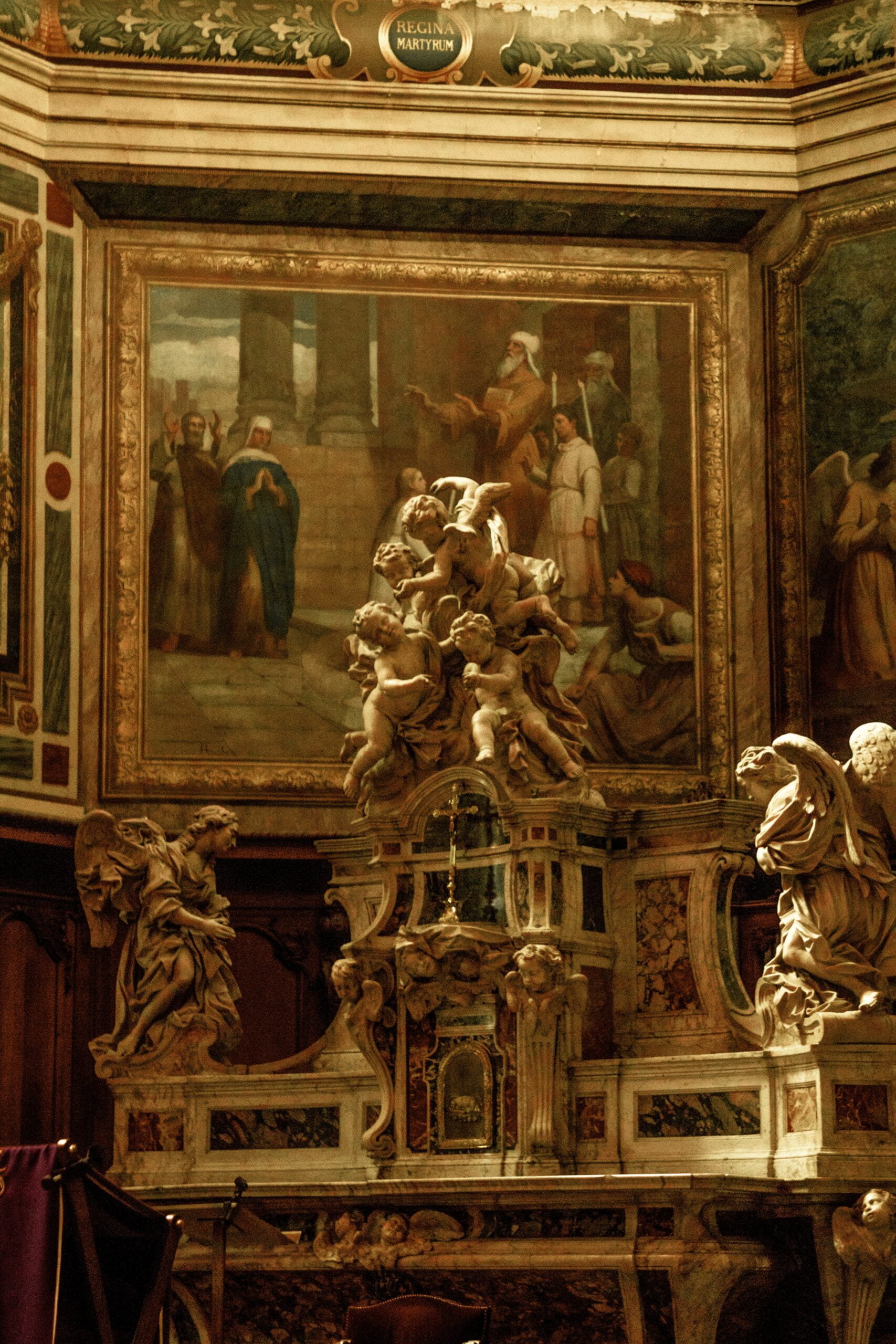
What is an Elevator Pitch, and How is it Different from the Artist’s Statement?


Imagine you step into an elevator and suddenly find yourself face to face with your favorite artist you’ve wanted to meet since forever. What would you say in those precious few moments to introduce yourself?
This is where the elevator pitch comes into play. It conveys who you are. On the other hand, the artist statement provides a deeper exploration of your working process, motivations, and the stories behind the art. In an artist’s tool set, these concise yet powerful forms of communication serve different purposes but share a common goal: to engage the audience and leave a lasting impression.
Today, we will focus on the differences between the elevator pitch and the artist’s statement, highlighting their importance in art.
This article will cover the following:
- What is an elevator pitch.
- How to use an elevator pitch to convey your message.
- 5 tips that can help you create your elevator pitch.
- What is an artist’s statement.
- Tips that can help you get a compelling arts statement and gain more sales.
So let’s go on a trip to understand the artist’s statement and elevator pitch and discover their unique roles.

What is an Elevator Pitch?
In today’s fast-paced world, attention spans are short, and first impressions matter more than ever. The elevator pitch is a carefully crafted summary that conveys the essence of who you are as an artist or the core message of your work. It’s the verbal equivalent of a captivating trailer that convinces the listener to learn more.
The elevator pitch aims to create curiosity and interest in your work. It is not meant to provide a comprehensive overview but to catch the listener’s interest, prompting them to seek more information or explore your portfolio.
How to Create an Effective Elevator Pitch in 5 Easy Steps
1. Hook: Craft a captivating opening that grabs attention.
Begin your elevator pitch with a compelling hook immediately captures the listener’s interest. This could be a thought-provoking question, a bold statement, or a gripping introduction that sets the stage for what’s to come.
2. Purpose: Clearly state the purpose of your work.
Communicate the central purpose of your work. Whether it’s to challenge societal norms, evoke emotions, or spark conversations, make it clear and concise.
3. Unique Selling Point: Highlight the features of your work.
Identify and emphasize lwhat sets you apart from others. What makes your art or your creative process stand out? Is it a unique technique, a fresh perspective, or a fusion of different art forms? Highlight these features.
4. Target Audience: Identify the group of people you wish to work with
Understand your target audience and tailor your elevator pitch accordingly. Identify the community your work is designed to connect with, ensuring your pitch aligns with their interests, values, and aspirations.
5. Call to Action: Conclude with an invitation for further engagement.
Conclude your elevator pitch by inviting the listener to take the next step. This could involve visiting your website, attending an exhibition, or conversing to explore potential collaborations. Make it easy for them to continue the conversation and deepen their engagement with your work.
What is an Artist Statement?
While the elevator pitch is a brief and verbal introduction, the artist’s statement takes a more expansive form as a written narrative. It serves as a window into the artist’s world, offering a deeper understanding of their inspirations, philosophy, and the context surrounding their work.
The artist’s statement bridges the artist and the viewer, offering insights that enhance the audience’s appreciation and interpretation of the artwork. It serves as a guide, enabling viewers to delve beyond the surface and grasp the artist’s underlying intentions, concepts, and emotions.
Unlike the concise nature of the elevator pitch, the artist’s statement allows for a more detailed exploration of an artist’s creative journey. Artists can explore their experiences, influences, techniques, and thematic preoccupations. It is an opportunity to share the stories and ideologies that shape their artistic practice.
What does an Artist Statement Include?
Your background, artistic philosophy, or overarching theme.
Begin the artist’s statement by providing a brief introduction that sets the stage for the reader. This may include an overview of your background, training, or influences. It can also introduce the overarching theme or concept that threads through your work.
Techniques or concepts used in your work
Delve into specific artworks or projects, offering detailed descriptions and insights. Discuss the artistic techniques, the conceptual framework driving your work, and the underlying meanings embedded in your creations. Use this section to provide a deeper understanding of your process and choices.
Infuse the statement with the artist’s unique voice and perspective.
An artist statement should reflect your individuality and artistic voice. Use language that aligns with your creative style and conveys your authentic self. By infusing your statement with your unique perspective, you can establish a connection with the reader and create a more intimate understanding of your work.
A connection with the reader by addressing shared emotions.
Art can evoke emotions and connect people on a deeper level. Use your artist statement to create a bridge between your work and the audience by addressing shared human experiences or emotions. Make your art relatable and resonate with the reader’s journey, fostering a sense of empathy and connection.
Summary of your vision or goals for future
Conclude your artist statement by summarizing your artistic vision, long-term goals, or aspirations. Share your thoughts on future artistic explorations and how you aim to evolve further and push the boundaries of your practice.
Leave the reader with a sense of anticipation for what is to come.
By crafting a well-written artist statement, you provide a roadmap for viewers to navigate your artistic world, fostering a deeper connection and appreciation for your work.
The Differences Between These Two
The elevator pitch and artist statement differ significantly in length and format. The elevator pitch is a brief, spoken summary designed to capture attention and curiosity quickly. At the same time, the artist’s statement allows for a more in-depth exploration of the artist’s creative journey and intentions.
The elevator pitch is an initial hook, while the artist’s statement delves deeper.
The elevator pitch acts as a powerful initial hook, capturing attention, generating curiosity, and establishing a memorable impression within a short time.
Its concise nature is ideal for networking events, brief encounters, or introductory situations where brevity is key. It aims to ignite interest and prompt further engagement.
On the other hand, the artist statement provides a platform for artists to delve deeper into their creative process, motivations, and the conceptual framework behind their work.
It allows artists to explore personal experiences, and influences, offering a richer context for viewers to interpret and appreciate their art. The artist’s statement provides an opportunity for self-reflection, self-expression, and establishing a more profound connection with the audience.
Despite their differences, the elevator pitch and artist statement complement and strengthen each other. The elevator pitch is the initial gateway, grabbing attention and inviting individuals to explore your work further.
When both the elevator pitch and artist statement are carefully crafted and aligned, they create a cohesive narrative and a strong artistic brand.
How to Master These Art of Communication
Recognize your audience:
Make your communication specific to the audience or situation. Knowing your target audience’s interests, tastes, and values will help you create a pitch and statement that will appeal to them.
Practise, practise, practise:
To ensure clarity and confidence, revise and rehearse. Practice improving your delivery, practise in front of a mirror, with friends or mentors, and ask for comments.
Ask for feedback:
Get opinions from mentors or industry experts. Their viewpoints can offer insightful advice and aid in improving your messaging so that it will better connect with your audience.
Be genuine
Embrace your individuality and adhere to your artistic goals. Honesty and honesty strengthen the relationship with the audience and cultivate awe and respect.
Hire an expert
Consider seeking assistance from professionals who specialize in crafting artist statements. Some experienced individuals and companies can help you form your vision, refine your language, and create an artist statement that aligns with your goals and connects you with your audience.
One highly recommended resource for artists seeking assistance with their artist statements is “Arts to Heart” (ATH). ATH offers consultancy services specifically tailored to help artists develop compelling artist statements.
Their team of experts understands and can guide you in articulating your unique artistic voice. Seeking their expertise can provide valuable insights and enhance the effectiveness of your artist statement.
Finally,
Yet, mastering the art of communication is no easy feat. It requires honing your words, understanding your audience, and infusing authenticity into every sentence. Practice your pitch, seek feedback from trusted mentors, and fearlessly embrace your artistic voice.
The images in this article are sourced from:
https://www.pexels.com/photo/a-person-doing-sketch-on-a-white-paper-7885360/













Comments 14